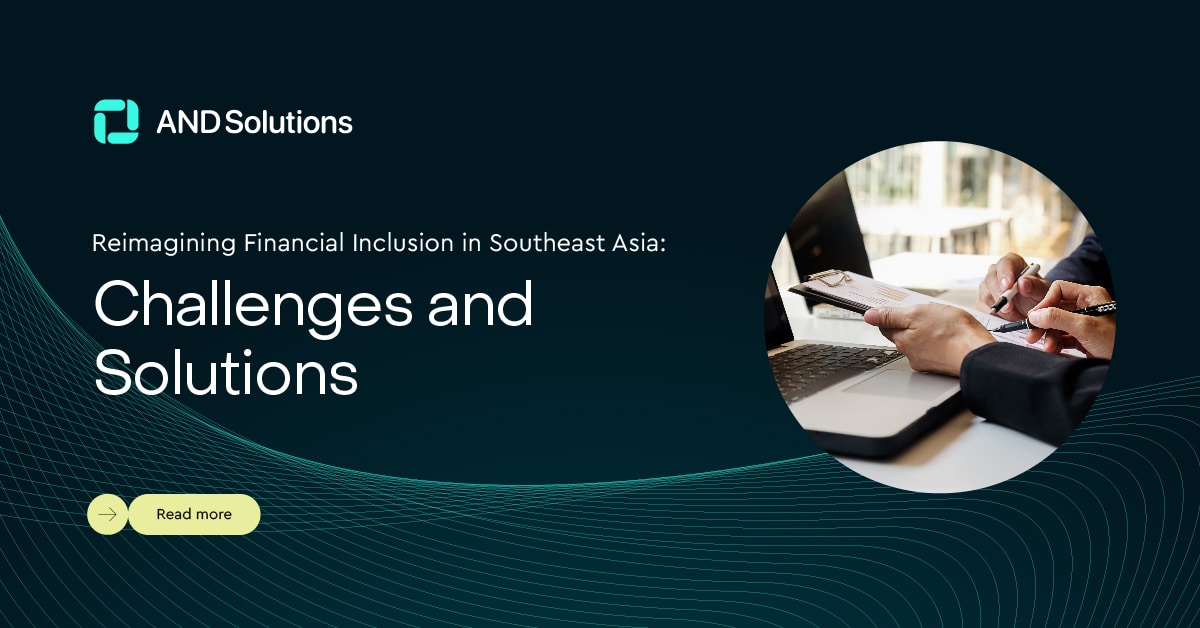Southeast Asia’s fintech landscape is brimming with potential, but a large portion of the population remains excluded from essential financial services. Limited access to formal banking, heavy reliance on cash transactions, and inadequate digital infrastructure create significant roadblocks. Overly stringent regulations can also stifle innovation and make it difficult for startups to offer affordable and accessible solutions to the underbanked. In this interview with UpTech Media, Khos-Erdene Baatarkhuu, CEO of AND Global, dives deep into the challenges and opportunities surrounding financial inclusion in Southeast Asia’s burgeoning fintech landscape.
Credit Scoring and the Unbanked
Digital lending is poised to be a major driver of financial inclusion. However, traditional credit bureaus rely on formal financial data, excluding the underbanked who lack credit history. This often applies to freelance workers or those in the informal sector with non-traditional income streams. Without a credit history, it’s difficult to assess their creditworthiness and offer them financial products.
For example, in the Philippines alone, 34.3 million remained unbanked in 2021 (Banko Sentral ng Pilipinas). This doesn’t imply an inability or unwillingness to repay – they simply lack formal credit data.
Alternative Data and Credit Scoring Solutions
Advanced credit scoring models that analyze borrowers’ digital activities are crucial for accurate assessment. AI-powered credit scoring solutions can leverage alternative data sources alongside traditional ones. Examples include:
- Formal data: Income sources (bank statements, salary history), employment verification, and credit bureau reports etc.
- Alternative data: Telco scores, psychometric assessments, loan questionnaires, repayment data, device and app usage data, and location information.
While Southeast Asia is still adopting alternative data scoring, the future holds promise.
Cybersecurity and Data Privacy
Data privacy and security are paramount in digital lending, where personal and financial information is involved. Weak digital literacy among the underbanked makes them more susceptible to fraud and scams.
This creates a vicious cycle: limited access to financial services hinders credit history building, which in turn restricts access to even more financial products.
Blockchain Technology: A Potential Solution
Blockchain technology offers a secure and decentralized way to store and share data, reducing the risk of data breaches and ensuring transparency in lending processes. Cryptocurrency adoption is also expected to grow in Southeast Asia, driven by increasing awareness of its potential benefits.
A prime example of this innovation is the collaboration between a LendMN NBFI and a blockchain-based tokenization platform – denode. This partnership represents a strategic move towards utilizing blockchain’s inherent qualities – its immutability and decentralization – to bring transparency to lending processes and safeguard investor funds from cybersecurity vulnerabilities.
How does the region respond to these challenges? What contemporary strategies can be employed to expand access to financial services, particularly for the underbanked, and how?
These challenges significantly impact the ability of individuals with limited access to financial services to achieve financial inclusion. The lack of access to formal financial services, reliance on cash transactions, and limited digital infrastructure restrict individuals’ access to digital lending and other fintech solutions. Furthermore, stringent and lengthy regulatory processes can increase operational costs for startups, making it difficult to provide affordable and accessible services to the underbanked population.
AND Global tackles financial exclusion through a multi-pronged approach. Our most effective strategies involve collaborating with local governments and financial institutions to develop tailored solutions that address the specific needs of underserved communities. By focusing on accessibility, affordability, and education, we aim to empower individuals to fully participate in the financial ecosystem.
Can digital banking literacy serve as a solution to these problems? How can fintech companies and financial institutions improve digital literacy among the underbanked to ensure they can fully utilise digital banking services?
Digital banking literacy is crucial for the underbanked to utilize financial services effectively. Here’s how fintech and financial institutions can improve it:
- Gamified Learning Apps: Interactive and user-friendly apps can make financial education engaging and accessible.
- Vernacular Language Support: Providing educational materials and customer support in local languages removes language barriers.
- Financial Literacy Workshops: Organizing workshops in communities can equip individuals with practical skills for managing finances and using digital banking tools.
As a banking and fintech leader, what significant trends or advancements in the financial technology space can help promote financial inclusion for the underbanked? How?
Significant trends include the rise of mobile banking, the development of blockchain for secure transactions, and the advent of AI and machine learning (ML) for improved credit scoring and fraud detection. These advancements can promote financial inclusion by making financial services more accessible, reducing transaction costs, and providing more personalized and efficient services. Additionally, the growth of the gig economy and e-commerce platforms offers new opportunities for the underbanked to access financial services and participate in the digital economy.
- Open Banking APIs: Open APIs allow secure data sharing between financial institutions and fintech companies. This fosters collaboration and the development of inclusive financial products tailored to specific needs.
- Blockchain Technology: Blockchain can enable secure and transparent micro-transactions, empowering the underbanked to participate in the digital economy.
- Biometric Authentication: Biometric authentication like fingerprint scans can provide secure and convenient access to financial services for those without traditional identification documents.
By addressing these challenges and leveraging these trends, Southeast Asia’s fintech sector can create a more inclusive financial landscape, empowering the underbanked to fully participate in the digital economy.
This blog post is a summary of the key points from our interview with UpTech Media. To learn more about AND Global, please visit https://and.global/.








